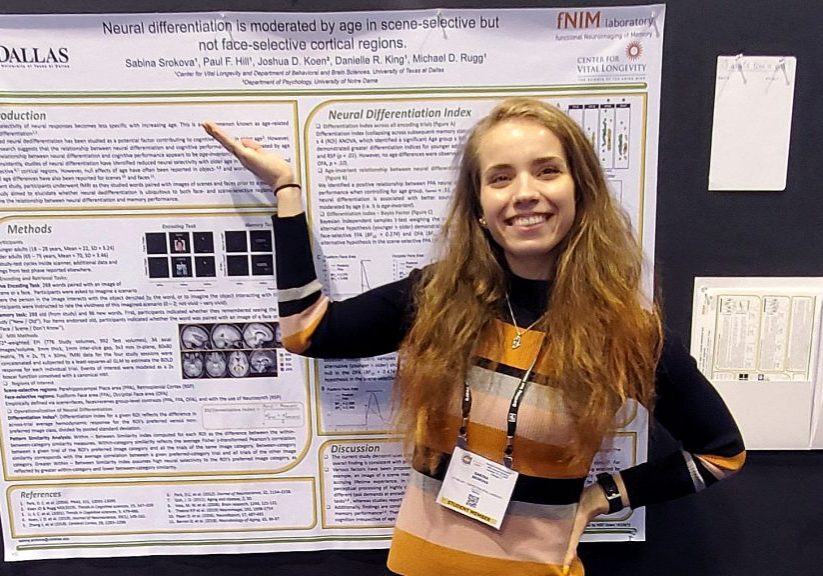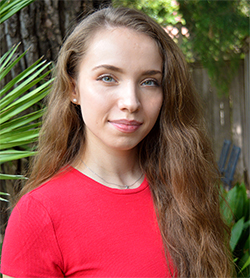From Slovakia to the CVL
By: Lauren Yglecias | December 14, 2020

Sabina Srokova grew up more than 5,000 miles away from Dallas, TX. As a Slovak-Spanish-speaking child in Bratislava, Slovakia, Sabina thought she would grow up to study language and linguistics, but fate had other plans for her.
“I took a Psychology class in my junior year of high school and I absolutely fell in love with the subject. All my original plans went out the window and I was adamant that I wanted to study Psychology and that the best place to do that would be in the United Kingdom.”
Sabina received a bachelor of science from the University of Essex. While working as a research assistant, Sabina joined a memory and aging lab after taking a cognitive aging class.
“I was fascinated by the research, but what really stuck with me were the friendly conversations I would often have with our older adult research volunteers. They were passionate and curious about our work, but I also heard many stories about their loved ones who were suffering from neurodegenerative disease. The realization that aging is inevitable as well as their own self-reported forgetfulness would consequently cause them anxiety. Their participation in our research reflected their way of contributing to science so that one day we can all age gracefully without having to fear the process.”
Sabina says that the volunteer participants helped her realize that cognitive aging and neurodegenerative disease is not just a challenge for individuals and their family.

“We all age, and the worldwide growth in the elderly population affects our society at large. That is when I recognized that I too wanted to contribute to our understanding of cognitive aging and this dedication has brought me to CVL.”
Sabina, who is in her third year of the cognition and neuroscience Ph.D. program at the University of Texas at Dallas, is currently interested in studying how and why episodic memory differs with increasing age.
“I find myself most excited about neural de-differentiation – a phenomenon characterized by an age-related decline in the specificity with which cortical brain regions perform tasks or respond to a specific stimulus type.”
Sabina was the lead author of a study recently published by CVL director, Dr. Michael Rugg’s Functional Neuroimaging of Memory lab. The research team analyzed how some parts of the brain perform differently over time in response to various kinds of visual input. The article was published April 27, 2020, in the Society for Neuroscience’s eNeuro journal.
Read: Researchers Examine Age Differences in How the Brain Perceives, Remembers
“Prior research from our lab and others suggests that brain regions which process visual scenes and spatial information appear particularly sensitive to increasing age and that greater neural differentiation of these regions is related to better memory across the lifespan. This has made me curious about what makes these scene-selective cortical regions so ‘special’.”

“Sabina began to have an impact on our research almost from the day she joined the lab,” says Dr. Michael Rugg, “Her work on neural dedifferentiation is highly innovative and promises to be a major influence on our field.”
Sabina says she joined the CVL because of the collaborative nature within the labs.
“The idea of being a part of a center which houses several laboratories was especially appealing as I wanted to gain a broader knowledge of cognitive aging. Although the work of the labs at CVL overlaps, the center is quite diverse and we all work on something slightly different.”
In 10 years, Sabina says she hopes to continue her research interests and start her own lab while training and mentoring the next generation of researchers.